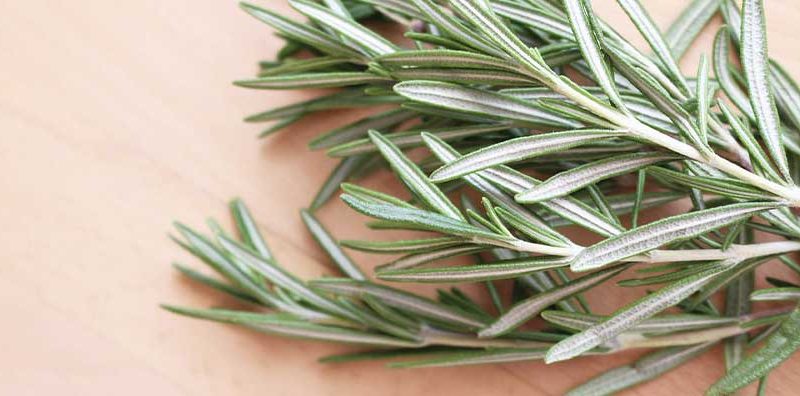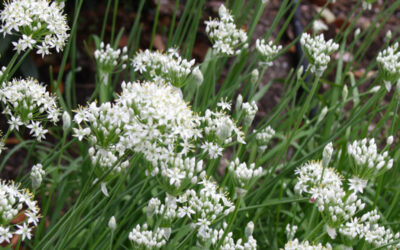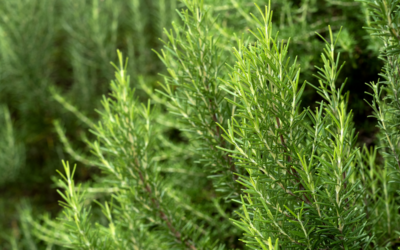When I walk in my herb garden I’m invariably drawn to my rosemary. My fingers can’t resist trailing thought the leaves and releasing that aroma. Every garden (herb or otherwise) should include a rosemary bush.
Rosemary (Rosmarinius officinalis) is a perennial shrub native to the Mediterranean. The name comes from the ancient Latin “ros marinis” meaning “dew of the sea.” This rather poetic description of rosemary comes from its habit of growing on hillsides along the Mediterranean. It sends up densely leaved branches to four feet in most conditions. The leaves are long needle like and narrow with a spicy resinous smell that always reminds me of pine forests.

There are many varieties of rosemary, having different color flowers and in upright or prostrate forms. Use upright varieties such as the heirloom rosemary, ‘Tuscan Blue,’ or ‘Arp’ to provide a bold background to other plants. Plant prostrate rosemary in rock gardens or next to retaining walls where it can cascade gracefully. Whichever variety you plant, give it plenty of room to spread.
Growing Rosemary in Your Garden
In your garden, rosemary can be used as an informal hedge, a backdrop for annual flowers, or a specimen in its own right. When planting, put rosemary where it will have excellent drainage and full sun for at least half of the day. This shrub has roots that will not tolerate wet conditions. The most common reason for die back or death is over-watering, whether man-made or natural. One spring I lost a mature, otherwise healthy bush because of root damage from excessive rains the previous year.
Because rosemary likes things hot and dry, freezing winters can be a problem for this evergreen. If you live north of Zone 7, you may have trouble over-wintering it. To improve survival, plant rosemary in an area sheltered from harsh winter winds and mulch well in the fall.
Enjoying the Flavor of Rosemary

The leaves of rosemary can be harvested year round. For immediate use in cooking, clip six inch sections of recent growth. The newer the leaves, the better the flavor. For decorating or drying, clip about twenty percent of the green foliage. Do not cut branches down to where there are no leaves. Bare branches will not rebud.
Rosemary is a reliable performer in the kitchen. Combine fresh rosemary leaves with crushed garlic to flavor any poultry dish. A rosemary and parsley mixture will flavor roasted potato wedges to perfection. When grilling lamb or fish, toss rosemary branches on the fire to add a pungent smoky flavor.













I have enjoyed your posts since signing up. Great information. Thanks for sharing your expertise in a way that this gardener in training can understand and apply.
Thanks for saying this. I do work on writing in a way that everyone can understand.